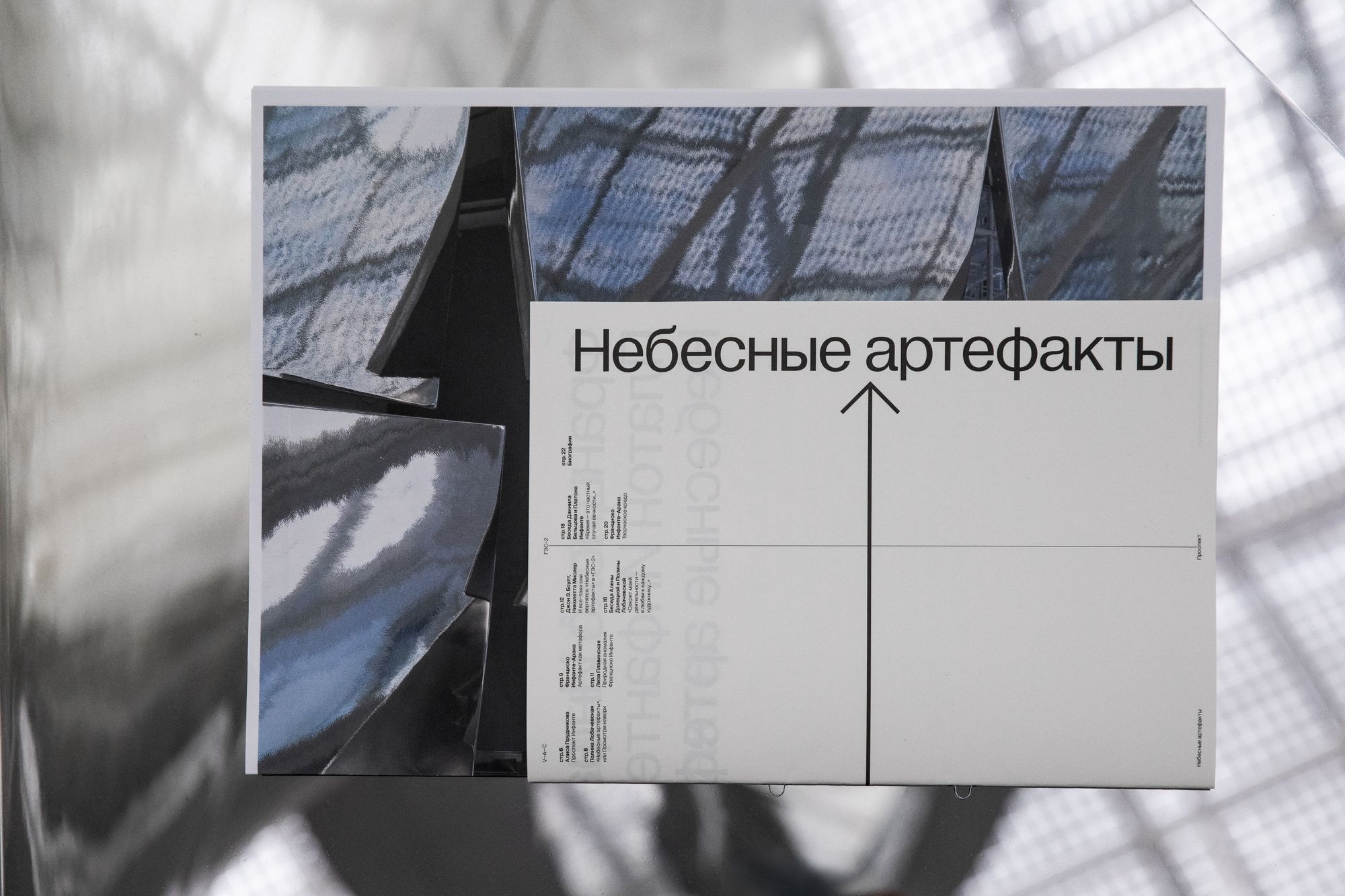Francisco Infante-Arana, Platon Infante.
Celestial Artefacts
A special edition dedicated to the eponymous art project for the
This special edition from

Francisco Infante-Arana (b. 1943) is a Russian artist, photographer, and art theorist. A pioneer of land art and kinetic art in the USSR and Russia, Infante-Arana explored ways to capture movement in drawing during the 1960s. By the 1970s, he had begun creating abstract installations—referred to as “artefacts”—in natural landscapes, integrating mirrors, moving elements, and optical illusions into his work.
Platon Infante (b. 1978) is a contemporary Russian artist and filmmaker known for his multimedia works and installations. His practice investigates the interaction between real and virtual spaces and the phenomena that arise at their boundaries. Born to artists Francisco Infante and Nonna Goryunova, he represents a lineage of Russian kinetic art that spans from the 1970s to the 2010s.
Francisco Infante’s artefacts have traditionally been ephemeral—akin to butterflies—existing only in brief encounters with the sky, water, snow, and plants before being dismantled and captured through photography. Now, within the measured environment ofGES-2 , Celestial Artefacts takes on a new dimension. Infante’s installation finds resonance with the visionary architecture of Renzo Piano, creating a dynamic yet reciprocal connection. This interaction transforms Celestial Artefacts into an organic component of the House of Culture—just as the House of Culture itself becomes part of the artwork’s evolving narrative.
Each article explores the key themes of the Celestial Artefacts installation and the creative methodology of Francisco and Platon Infante. Central to their artistic vision are metaphors of time and infinity, as well as the concept of the “artifact, ” which merges natural and artificial elements.
A particular focus of the publication is the interaction between Celestial Artefacts and the architectural ensemble of the
The
Executive editor
Grigory Cheredov
Translator
Evgenia Fomenko
Editors
Dmitry Beglyarov
Daniil Beltsov
Olga Grinkrug
Design and layout
Misha Filatov
Kirill Gorbunov
Vasily Kondrashov
Maria Kosareva
Maria Vinogradova
Photographers
Daniil Annenkov
Vadim Stein